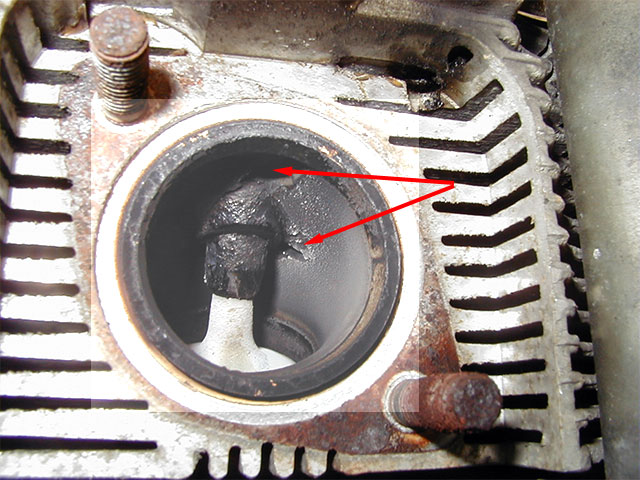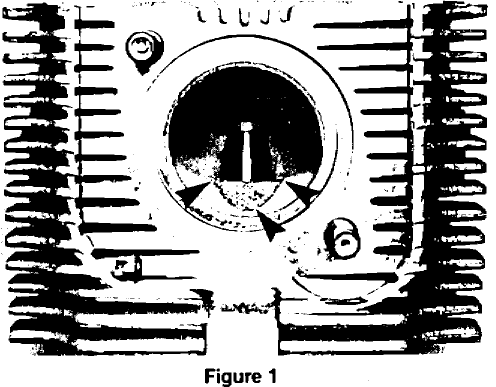Cold Start Jangling Noise?
#31
Instructor
Besides, I can't imagine a 50 cent sized piece passing through the valves and remaining in one piece.
I've had this same metallic, clanking noise at startup and have discussed it in other threads. It would only last for a second or two at COLD startup. I checked everything including cleaning chain tensioners, pulling and checking the starter pinion movement. Using the hose stethoscope it seemed to come from the bell housing so I figured it was the DMF calling it quits and planned on dealing with it when I do the clutch this winter. I did also consider that something could be rattling around in the cat converter.
Anyway, after a few DE days of running up to redline, the noise has disappeared. So after reading this thread I'm wondering if I had something rattling around in the exhaust system that finally got blown out?
I also remember reading some threads about the ceramic coating coming off and it not being something to get overly concerned about.
#32
Technical Guru
Rennlist Member
Rennlist Member

---------------------------------------------------
Cylinder Head Ceramic Liners - Cracks or Breaks
9222porsche01
June 8, 1990
Model
911C2/C4
Group
1
Number
9015
Part Identifier
1570
Subject:
Cylinder Head Ceramic Liners

ATTENTION:
Service Manager/Service Technician
Models Affected:
911 Carrera 2 and 911 Carrera 4
Concern:
Cracks or breaks in ceramic exhaust port liners.
Repair Information:
Small cracks and/or breaks in the ceramic port liners in the area of the valve guides are sometimes visible even on new cylinder heads (See Figure 1). They do not influence the function of the port liners.
Cylinder heads must not be replaced for the above mentioned symptoms unless 1) breaks go down to the base material of the cylinder head, 2) broken surface area is larger than 1 sq.cm (0.155 sq.in.) or 3) the cracks extend from valve guide to the edge of the ceramic liner (on the valve seat or exhaust flange area).
#33
Instructor
Thread Starter
Join Date: Jan 2006
Location: Edmonton Alberta
Posts: 166
Likes: 0
Received 0 Likes
on
0 Posts
Well, its good to know this isn't a killer event...
"Repair Information:
Small cracks and/or breaks in the ceramic port liners in the area of the valve guides are sometimes visible even on new cylinder heads (See Figure 1). They do not influence the function of the port liners.
Cylinder heads must not be replaced for the above mentioned symptoms unless 1) breaks go down to the base material of the cylinder head, 2) broken surface area is larger than 1 sq.cm (0.155 sq.in.) or 3) the cracks extend from valve guide to the edge of the ceramic liner (on the valve seat or exhaust flange area)."
I've deferred to the technicians comments at the service centre I go to (specializing in european imports and exotics) regarding what I do about this situation, and they're recommending liner replacement. They know my situation, so I doubt they'd sandbag me on this service, although I suppose stranger things have happened.
Relative to Jason's comment, I don't know yet which or how many of the 3 conditions for head replacement I meet. The large piece of ceramic I handled this morning looked like it exceeded the 1 sq cm 2nd condition (it was about 4 sq cm or larger), and its extreme edges appeared to be finished suggesting it met the 3rd condition as well.
Assuming none of the three conditions are met, but pieces have come loose and are falling out, the Porsche comment suggests nothing needs to be done. So what do you do about the remaining pieces still in place: remove them once and for all before they break free; or leave them in and remove them after they break free (sounds like a lot of work)?
Thanks for your reassuring comments, regardless of where this goes.
"Repair Information:
Small cracks and/or breaks in the ceramic port liners in the area of the valve guides are sometimes visible even on new cylinder heads (See Figure 1). They do not influence the function of the port liners.
Cylinder heads must not be replaced for the above mentioned symptoms unless 1) breaks go down to the base material of the cylinder head, 2) broken surface area is larger than 1 sq.cm (0.155 sq.in.) or 3) the cracks extend from valve guide to the edge of the ceramic liner (on the valve seat or exhaust flange area)."
I've deferred to the technicians comments at the service centre I go to (specializing in european imports and exotics) regarding what I do about this situation, and they're recommending liner replacement. They know my situation, so I doubt they'd sandbag me on this service, although I suppose stranger things have happened.
Relative to Jason's comment, I don't know yet which or how many of the 3 conditions for head replacement I meet. The large piece of ceramic I handled this morning looked like it exceeded the 1 sq cm 2nd condition (it was about 4 sq cm or larger), and its extreme edges appeared to be finished suggesting it met the 3rd condition as well.
Assuming none of the three conditions are met, but pieces have come loose and are falling out, the Porsche comment suggests nothing needs to be done. So what do you do about the remaining pieces still in place: remove them once and for all before they break free; or leave them in and remove them after they break free (sounds like a lot of work)?
Thanks for your reassuring comments, regardless of where this goes.
#34
Instructor
Thread Starter
Join Date: Jan 2006
Location: Edmonton Alberta
Posts: 166
Likes: 0
Received 0 Likes
on
0 Posts
Ceramic parts are usually used where you want to dissipate heat quickly and efficiently (I believe), which would make sense when used around exhaust components. Considering the violent environment around the exhaust ports, I can see why ceramic parts would be subject to shattering and breaking off from time to time.
But if you don't replace the broken liners as the pieces come loose, don't you risk the introduction of hot-spots around the exhaust port, perhaps accelerating the burning of the valve seat and ground face, not to mention prolonged heat saturation of the valve stem and lubricant?
Or am I worried about an insignificant heat transfer issue, here? If the liners are "expendable", why were they designed into the engine in the first place?
But if you don't replace the broken liners as the pieces come loose, don't you risk the introduction of hot-spots around the exhaust port, perhaps accelerating the burning of the valve seat and ground face, not to mention prolonged heat saturation of the valve stem and lubricant?
Or am I worried about an insignificant heat transfer issue, here? If the liners are "expendable", why were they designed into the engine in the first place?
Last edited by f11; 10-12-2007 at 06:49 PM. Reason: added question
#35
#36
Technical Guru
Rennlist Member
Rennlist Member
I've deferred to the technicians comments at the service centre I go to (specializing in european imports and exotics) regarding what I do about this situation, and they're recommending liner replacement. They know my situation, so I doubt they'd sandbag me on this service, although I suppose stranger things have happened.
Assuming none of the three conditions are met, but pieces have come loose and are falling out, the Porsche comment suggests nothing needs to be done. So what do you do about the remaining pieces still in place: remove them once and for all before they break free; or leave them in and remove them after they break free (sounds like a lot of work)?
Originally Posted by f11
Or am I worried about an insignificant heat transfer issue, here? If the liners are "expendable", why were they designed into the engine in the first place?



